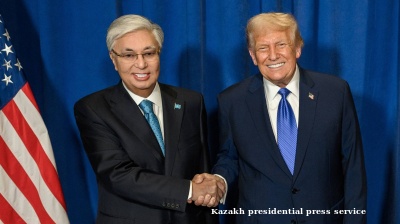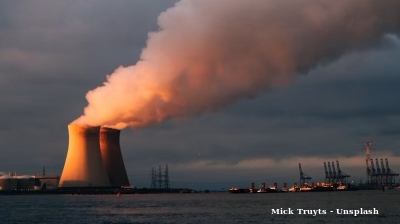Chinese investments in Central and Southeast Europe are on an upward trend that is expected to accelerate as investors increasingly shift their attention towards the region following the launch of the Belt and Road Initiative.
Belt and Road is a global concept to revive the ancient silk routes, spanning several continents, from the Eurasian landmass to parts of Oceania and North Africa. The launch of the initiative back in 2013 has led to a more focused pattern of investment abroad by Chinese companies, argues Susan Wang, counsel in law firm Dentons’ Budapest office and head of the firm’s CEE China desk.
“China’s policy of encouraging domestic investors going abroad has been in operation for many years, and accelerated especially after 2008, but not until the Belt and Road Initiative had the Chinese government given a clear direction towards which areas, countries and industries the investments are encouraged to flow to,” Wang tells bne IntelliNews.
The concept of the overland part of the initiative, the Silk Road Economic Belt, was first broached during Chinese President Xi Jinping’s visit to Astana in September 2013; the Maritime Silk Road was announced in Jakarta a month later. The Eastern Europe region — from Central Asia to the EU member states of Central Europe — lies on the overland routes from China to Western Europe, while Southeast Europe is an important part of the maritime route via the Eastern Mediterranean ports.
Wang believes the combination of European economic cooperation (countries in the CEE/SEE region are either EU member states or prospective members), culture, and resources make the region very attractive to Chinese investors, and forecasts it will become “the next treasure place for investors” in future.
“Under the initiative, Chinese investors are starting to shift their focus from the more developed countries such as the US, Germany and Australia to the CEE/SEE region, which has high quality assets but has not been so successful till now to draw the attention of the investors,” Wang says.
“[D]ue to the financing support of the Chinese government for the projects along the Belt and Road Initiative, we believe that there will be a significant growth in Chinese investments in the CEE/SEE region,” she adds.
The Greek port of Piraeus, operated by Chinese Cosco since 2008, has become an important gateway to Southeast Europe, adding to the impetus for Chinese investment into transport infrastructure in the region. Chinese-backed investments range from the modernisation of the Belgrade-Budapest railway to the construction of the Bar-Boljare motorway, which will connect another port, Bar in Montenegro, to international transport corridors running through the region.
“Investment into the infrastructure area will help CEE/SEE countries to boost their economies while at same time easing excess manufacturing capabilities in China, to achieve a win-win situation for the two regions,” says Wang.
Aside from transport infrastructure, Chinese investors are increasingly also turning their attention to the energy sector — eyeing, for example, coal power plants in Bosnia & Herzegovina and the expansion of Romania’s Cernavoda nuclear power plant — and buying up industrial assets such as Serbia’s Zelezara Smederevo steel mill and the Petromidia refinery in Romania. The annual “16 + 1” summits bringing together top officials from China and the CEE/SEE countries generally result in a raft of deals adding up to several billions of euros.
In future, Chinese investments in the region are likely to diversify further, Wang forecasts. “Infrastructure is probably the area that needs investment most heavily in the region; these investments will naturally bring along investment into industrial assets as well,” she tells bne IntelliNews. “But agriculture, fresh and quality food industry, energy and the technology sector are also areas that will drive more Chinese investments.”
Features

Indian bank deposits to grow steadily in FY26 amid liquidity boost
Deposit growth at Indian banks is projected to remain adequate in FY2025-26, supported by an improved liquidity environment and regulatory measures that are expected to sustain credit expansion of 11–12%

What Central Asia wants out of the upcoming Washington summit
Clarity on critical minerals and a lot else.

Global leaders gather in Gyeongju to shape APEC cooperation
Global leaders are arriving in Gyeongju, the cultural hub of North Gyeongsang Province, as South Korea hosts the Asia Pacific Economic Cooperation summit. Delegates from 21 member economies are expected to discuss trade, technology and security.

Project Matador marks new South Korea-US nuclear collaboration
Fermi America, a private energy developer in the United States, is moving ahead with what could become one of the most significant privately financed clean energy projects globally.



